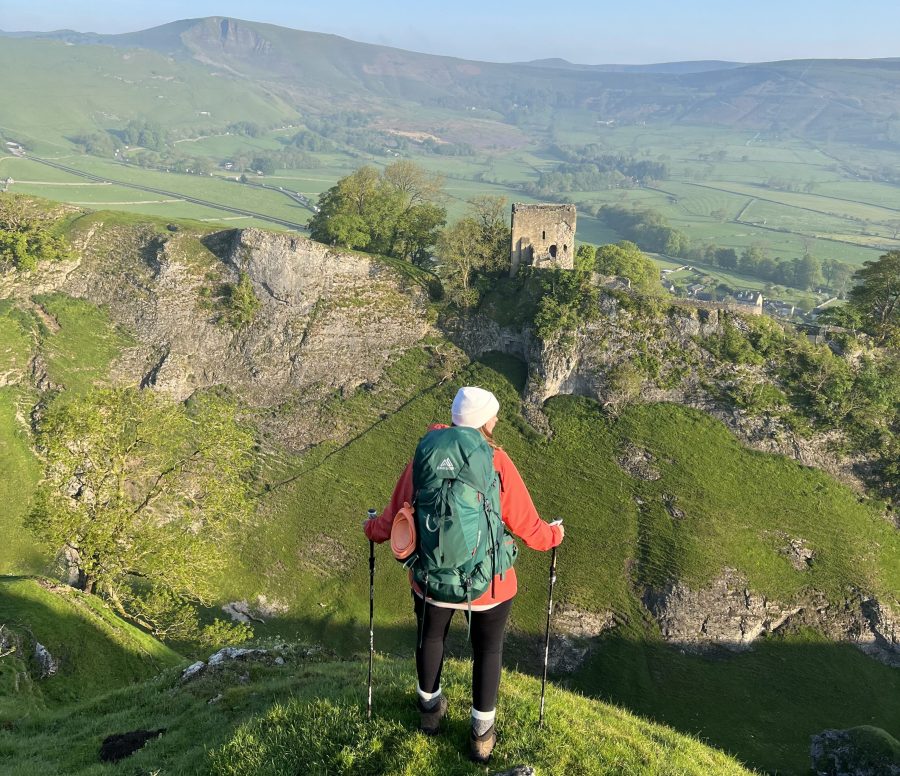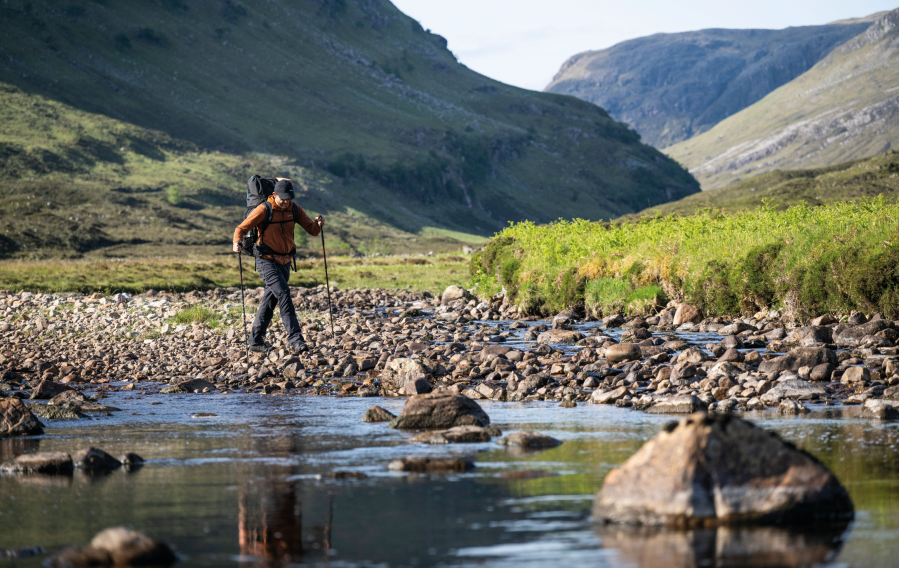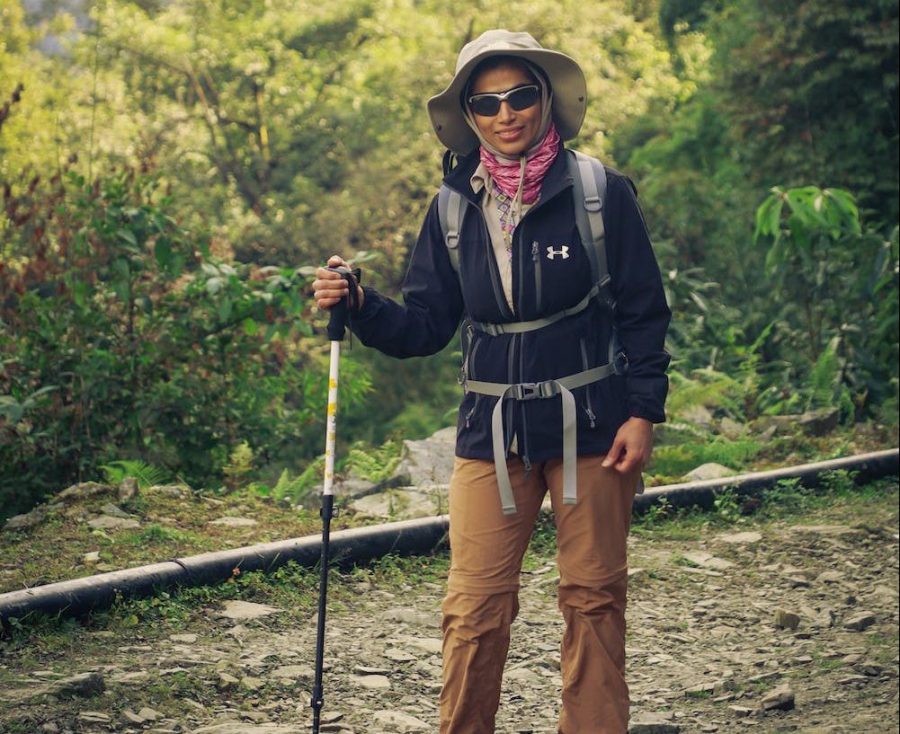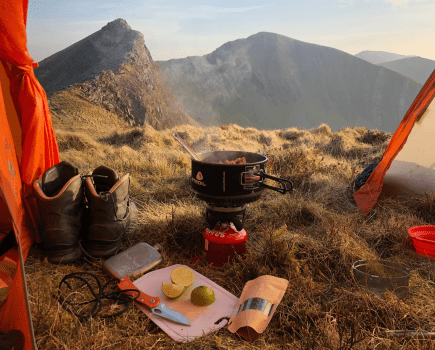Single pringle or doing the double? When taking to the hills is one or two hiking poles the best solution? Well, firstly we’ll go to the outdoor brands that have been constructing hiking poles for decades.
While a few manufacturers do sell sell single hiking poles – such as the Trekmates Fold Lock – you’ll mostly found them sold in pairs. Let’s dig into why.
Main image credit: Brady Knoll
Should you use one or two hiking poles?
As with any outdoor gear, the answers are hotly debated. Yet, the answer is often a simple matter of assessing you own needs and acting accordingly. There are a number of reasons you might want to use a single pole for hillwalking. We’ll get into those.
For now, let’s look at why you might want to invest in two hiking poles.

Peveril Castle in the morning sun. Credit: Francesca Donovan
Using a pair of hiking poles
The benefits of using a pair of hiking poles are many. First and foremost, many hillwalkers coming off injury or suffering with joint pains find them a reassuring addition to the outdoor toolbox.
A pair of hiking poles can ease the burden on your legs. No matter how strong your body might feel, this is especially important for those carrying heavy packs on multi-day hikes over many miles. While it’s a misconception that hiking poles reduce the effort you’ll have to expend – read more about that here – a pair of poles can certainly reduce fatigue by spreading effort between your upper and lower body and giving you a psychological boost.
In practical terms, a pair of poles can be handy when tackling steep descents and can act as an extra breaking power. Some even come with in-built shock absorption. On the ascents, they will allow you to engage your arms as well as your legs for added upward propulsion.
Perhaps most importantly, poles can also offer balance over rough and uneven terrain. Walking poles are also invaluable for the extra stability they provide during river crossings.

A river crossing below Beinn a Chlaidheimh. Credit: James Roddie
Finally, I have personally found that using hiking poles helps me walk a little taller and with an improved gait in adverse conditions such as strong winds and rain. Likewise, in fine weather, a pair of poles help me to get into a good rhythm or flow with my footfall and keep pace. I’ve found this helpful over the winter months when keeping to schedule is more important as the days get shorter.
You’ll get some of these benefits – but not all – from using a single pole, too.
Using a single hiking pole
Single poles – sometimes referred to as hiking staffs – can be useful in some circumstances and indeed is usually better than nothing when used correctly. This is particularly true if you simply want to use one hiking pole for stability on rough terrain or as a break on descents and will complete most of your walk with the pole in your pack.
While there are ultra lightweight pairs of poles on the market – as in these Komperdell Carbon C3 Cloud Compact poles – lightweight backpackers might prefer to carry just one pole, thus halving their pack weight. Every little helps when you’re counting ounces – and the pennies!

A woman hiking with single pole in Annapurna. Credit: Kumar Dulal
What you won’t get with a single pole is the same degree of propulsion, rhythm, balance or stability in arduous conditions or over rough terrain. Indeed, if using a single pole over a few miles, consider alternating hands. Otherwise, there’s a chance you’ll overwork or strain the arm doing the heavy lifting with the hiking pole.
Pitching with your pole
Of course, the ultra lightweight enthusiast among us will know that there’s more to poles than meets the eye. Nowadays, tent and tarp innovations have incorporated poles into pitching systems. You’ll need to ensure any pole is cut out for the requirements of the shelter. Some shelters take two poles – as in the Alpkit Polestar – so of course, a single simply won’t do.
Read more: With this advice under your belt, you might be ready to invest in a new pole – or pair! If so, check out The Great Outdoors’ expert gear reviewers’ trekking pole top picks.








